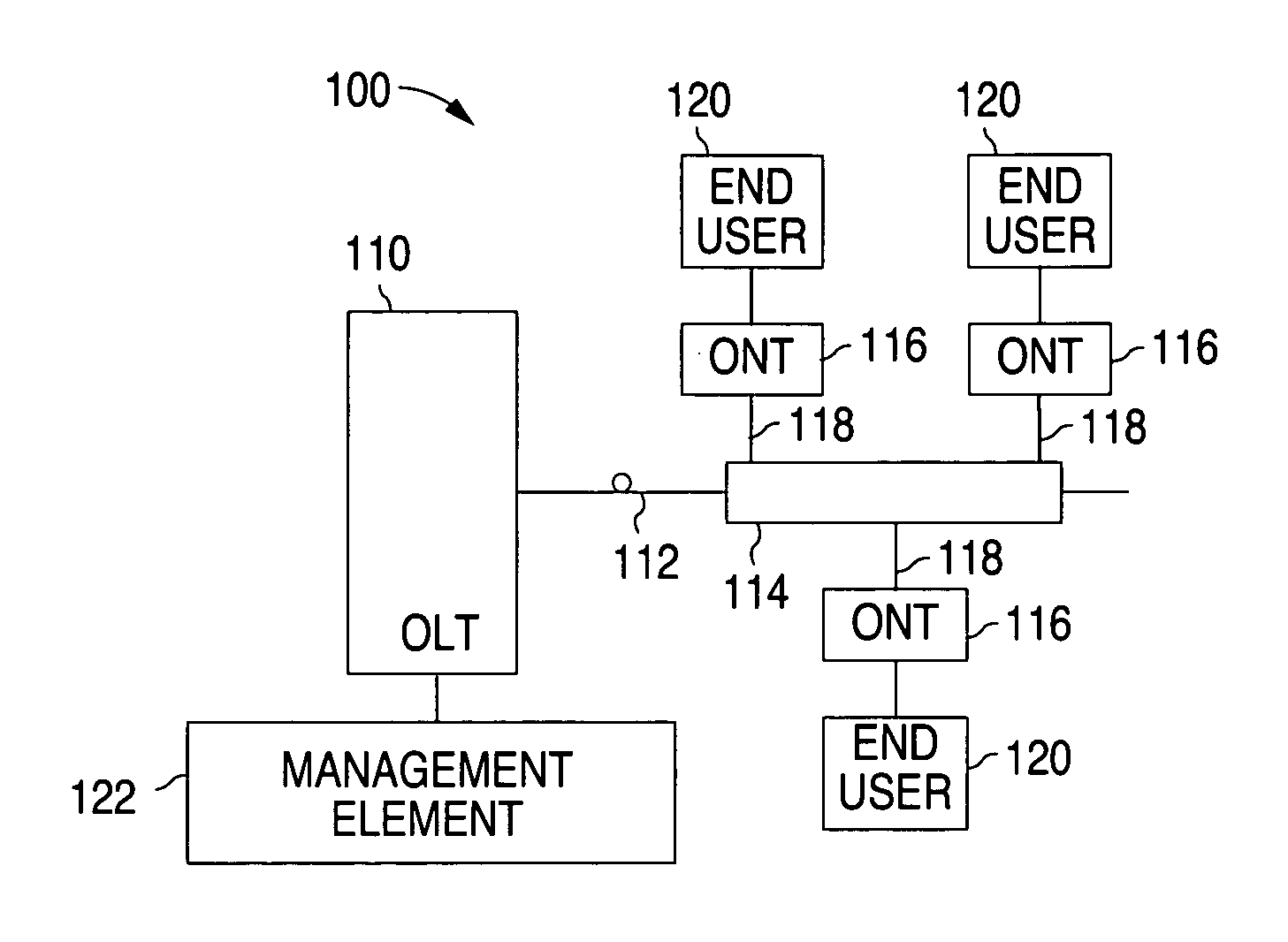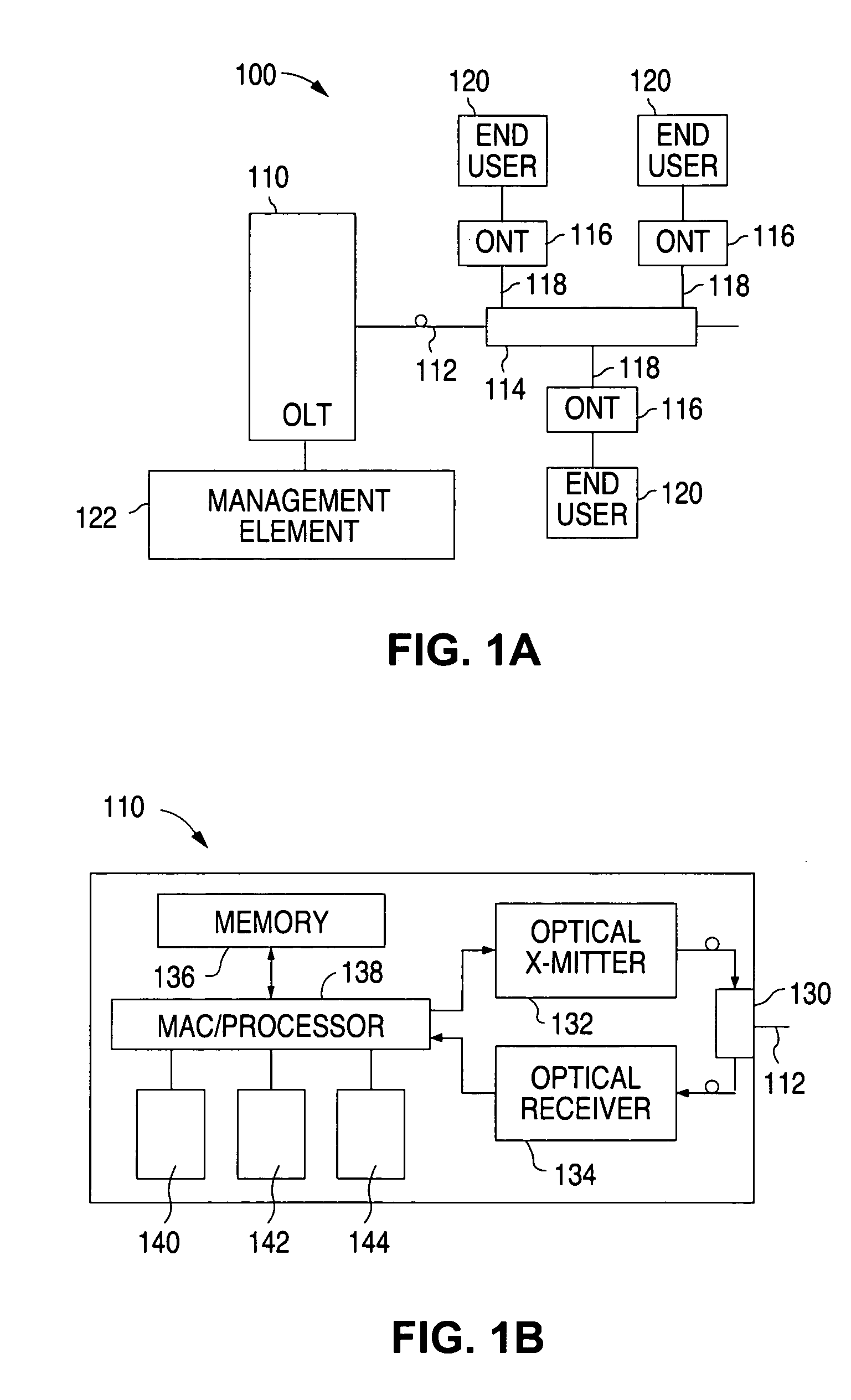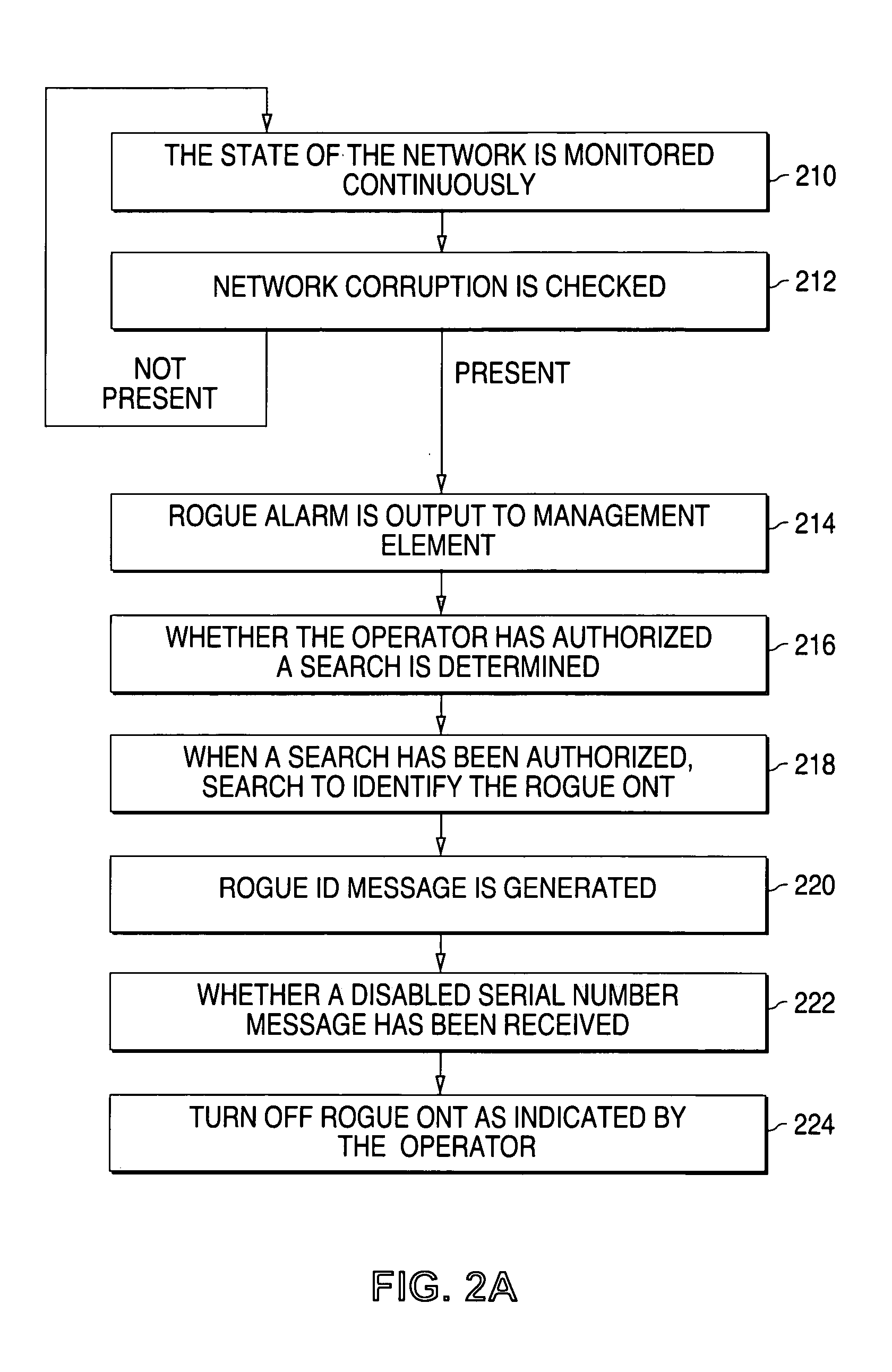Optical network that detects and removes Rogue ONTS
a technology of optical networks and onts, applied in the field of optical networks, can solve problems such as signal output and signal outpu
- Summary
- Abstract
- Description
- Claims
- Application Information
AI Technical Summary
Benefits of technology
Problems solved by technology
Method used
Image
Examples
Embodiment Construction
[0024]FIG. 1A shows a block diagram that illustrates an example of a point-to-multipoint communications network 100 in accordance with the present invention. As described in greater detail below, communications network 100 includes modified OLTs and ONTs which each detect and remove rogue ONTs from the network.
[0025] As shown in FIG. 1A, communications network 100 includes an optical line terminal (OLT) 110, a fiber optic cable 112, and a passive 1×N optical splitter 114 that is connected to OLT 110 via fiber optic cable 112. In addition, communications network 100 includes a number of optical network terminals (ONTs) 116, and a number of fiber optic cables 118 that connect optical splitter 114 to the ONTs 116. Each ONT 116, in turn, is connected to an end user 120.
[0026] Further, communications network 100 also includes a management element 122 that is connected to OLT 110. Management element 122 represents the operator interface to OLT 110, and can be configured in a variety of ...
PUM
 Login to View More
Login to View More Abstract
Description
Claims
Application Information
 Login to View More
Login to View More - R&D
- Intellectual Property
- Life Sciences
- Materials
- Tech Scout
- Unparalleled Data Quality
- Higher Quality Content
- 60% Fewer Hallucinations
Browse by: Latest US Patents, China's latest patents, Technical Efficacy Thesaurus, Application Domain, Technology Topic, Popular Technical Reports.
© 2025 PatSnap. All rights reserved.Legal|Privacy policy|Modern Slavery Act Transparency Statement|Sitemap|About US| Contact US: help@patsnap.com



